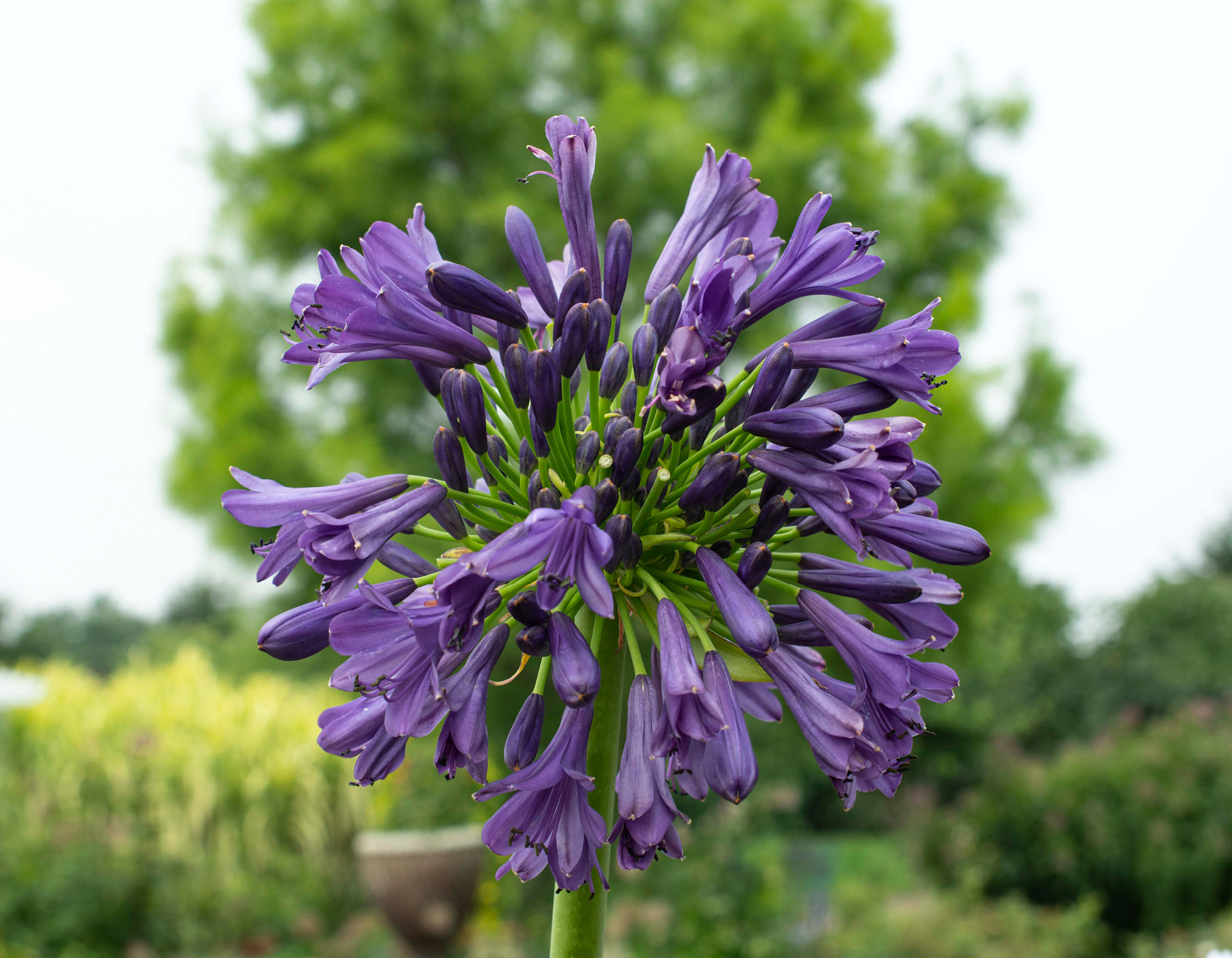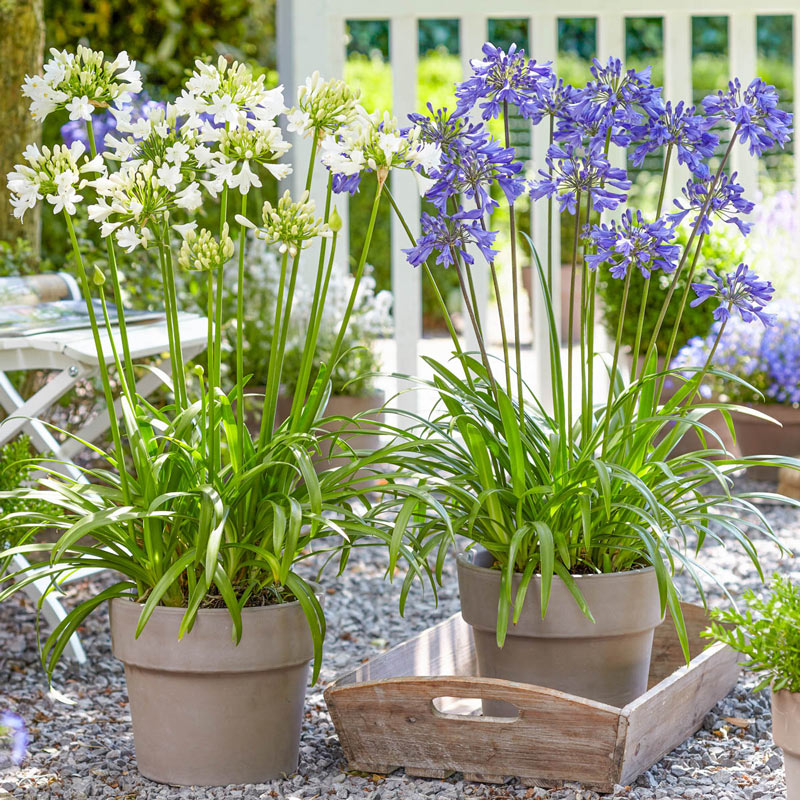Unleashing the Secret to Effective Agapanthus Farming: Idea for a Flourishing Garden
In the realm of gardening, cultivating agapanthus effectively calls for a critical technique that encompasses different facets of plant care. With cautious focus to detail, one can open the secrets to nurturing these stunning blooms, bring about a yard that grows with elegance and vibrancy. By understanding the subtleties of agapanthus growing, one can create a setting where these plants flourish and grow perfectly. In the complying with discussion, we will certainly discover vital pointers and techniques that will lead you towards a growing agapanthus yard, using understandings into finest methods, soil conditions, sprinkling strategies, and a lot more.
Growing Agapanthus: Best Practices
When growing Agapanthus, proper dirt preparation is essential for making certain successful growth and growth of these gorgeous flowers. Agapanthus, generally called Lily of the Nile or African lily, prospers in well-draining soil with a slightly acidic to neutral pH degree - Agapanthus. Prior to growing, it is vital to amend heavy clay dirts with raw material such as garden compost or peat moss to improve drain and provide vital nutrients for the plants
To grow Agapanthus, pick a place that receives full sunlight to partial color, as this will advertise healthy and balanced growth and plentiful blooming. Dig a hole twice the size of the plant's origin round and position the Agapanthus at the very same depth it was formerly expanding. Gently backfill the hole with dirt, pushing down firmly to get rid of any kind of air pockets around the origins.
Water the freshly planted Agapanthus thoroughly and remain to maintain the soil uniformly moist, particularly throughout the plant's energetic growing season. Agapanthus. Using a balanced plant food once a month can additionally support the plant's growth and blooming. By complying with these ideal practices for growing Agapanthus, you can develop a stunning screen of these captivating flowers in your garden
Suitable Soil Issues for Agapanthus
For ideal growth and flowering success of Agapanthus plants, making certain the soil conditions are optimal is crucial. Agapanthus prefers soil that is rich in nutrients, so integrating a well balanced plant food throughout the growing season can advertise healthy and balanced development and lively blooms.

Watering and Feeding Tips
To make sure healthy growth and dynamic blossoms, appropriate watering and fertilizing techniques are crucial for effective Agapanthus farming. Agapanthus plants take advantage of regular watering, especially throughout the growing period. It is suggested to water deeply once a week, making certain the soil is wet yet not saturated. During heat or in pots, even more constant watering may be needed to stop the dirt from drying out entirely.
When it involves feeding Agapanthus, a balanced plant food with equal parts nitrogen, phosphorus, and potassium can be used in the spring to advertise healthy growth and blooming. Slow-release plant foods are excellent for offering nutrients gradually over an extensive duration. Avoid over-fertilizing, as this can cause extreme vegetation growth at the expense of flowers.
Furthermore, integrating raw material like garden compost into the soil can enhance nutrient degrees and boost dirt structure, helping in the total wellness of the Agapanthus plants. By following these watering and feeding tips, garden enthusiasts can ensure their Agapanthus plants grow and create spectacular display screens of blossoms.
Pruning and Deadheading Strategies
Appropriate trimming and deadheading techniques play an essential role in preserving the wellness and aesthetics of Agapanthus plants, complementing the necessary techniques of watering and feeding for effective cultivation. Trimming Agapanthus involves getting rid of invested flower heads, yellowing or dead fallen leaves, and overall shaping of the plant to promote far better growth. Deadheading, the process of removing discolored blossoms, not only improves the plant's appearance but likewise urges additional growing.
When deadheading Agapanthus, it is advisable to snip off the blossom stem at the base making use of sharp, tidy shears. This procedure redirects the plant's energy from seed production back right into origin and vegetation development, advertising a much healthier and a lot more robust plant. Regular deadheading can extend the growing period of Agapanthus and prevent self-seeding, which can lead to congestion.
In terms of pruning, Agapanthus generally benefits from a light trim after flowering to clean up the plant and encourage fresh development. Reducing the spent blossom stems and getting rid of any type of dead or damaged foliage helps keep the plant's vitality and total appearance. Nevertheless, it is necessary to avoid cutting right into the i thought about this crown of the plant, as visit this can deteriorate its health.

Protecting Agapanthus From Vermins and Diseases
Carrying out effective bug and disease monitoring methods is crucial to securing the health and wellness and vitality of Agapanthus plants in growing. Agapanthus are usually sturdy plants, however they can still come down with numerous bugs and conditions otherwise correctly taken care of. One usual parasite that affects Agapanthus is the Agapanthus borer, a caterpillar that tunnels into the plant, causing damages to the flowers and leaves. To avoid invasions, normal assessment of the plants is crucial. If borers are detected, they can be by hand gotten rid of, or insecticidal soap can be used as a control measure.
In enhancement to insects, Agapanthus are vulnerable to diseases such as root rot and fungal fallen leave areas. These concerns can frequently be prevented by making certain correct drain and avoiding overwatering. Impacted components of the plant ought to be quickly eliminated to stop more spread if indicators of illness appear. Fungicides might also be made use of as a therapy step, following the producer's guidelines meticulously. By remaining attentive and addressing insect and illness concerns promptly, gardeners can assist their Agapanthus thrive and prosper.

Final Thought
To conclude, effective growing of agapanthus calls for correct planting strategies, suitable soil conditions, sufficient watering and feeding, regular trimming and deadheading, and defense from bugs and diseases. By following these ideas and methods, garden enthusiasts can make certain a flourishing yard loaded with stunning agapanthus flowers. Agapanthus. Bear in mind to preserve regular care and interest to information to advertise the wellness and longevity of these stunning plants
When planting Agapanthus, appropriate dirt preparation is vital for guaranteeing successful development and advancement of these gorgeous blossoms.Water the newly grown Agapanthus thoroughly and continue to keep the soil equally damp, specifically throughout the plant's active expanding season.For optimum growth and click for more info flowering success of Agapanthus plants, making sure the dirt conditions are optimal is important. When hair transplanting or growing Agapanthus, make sure the dirt is well-prepared to offer the essential structure for the plants to develop themselves effectively. One common bug that affects Agapanthus is the Agapanthus borer, a caterpillar that passages right into the plant, creating damage to the leaves and blossoms.